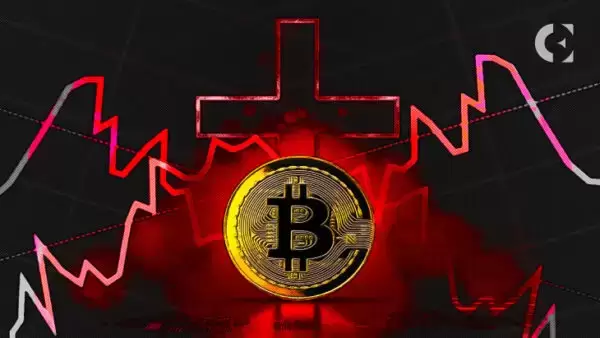 |
|
 |
|
 |
|
 |
|
 |
|
 |
|
 |
|
 |
|
 |
|
 |
|
 |
|
 |
|
 |
|
 |
|
 |
|
Cryptocurrency News Articles
L1 Supremacy? Solana’s Yakovenko Challenges Layer-2 Narrative, Sparks Debate on Blockchain Scalability and Future Architecture
Mar 25, 2025 at 05:10 pm
The cryptocurrency landscape is witnessing a significant ideological clash as Anatoly Yakovenko, co-founder of Solana, boldly challenges the prevailing industry narrative on blockchain scaling.

An ideological clash is brewing in the heart of the cryptocurrency landscape, specifically regarding the best strategy for scaling blockchain technology. Anatoly Yakovenko, co-founder of Solana (SOL), is assertively challenging the industry narrative by stating that Layer-1 (L1) blockchains, like Solana, can achieve both speed and cost-efficiency without needing Layer-2 (L2) solutions.
This assertion directly contradicts the widely accepted belief that L2s are crucial for enhancing blockchain scalability and performance, setting the stage for a heated debate on the optimal architecture for decentralized networks.
An L1-Centric Vision: Efficiency Without Layers
Yakovenko’s critique of L2 solutions stems from his belief that L1 blockchains, through their native design, can be sufficiently fast, cheap, and secure. He maintains that L2 solutions, despite aiming to augment performance, ultimately introduce new complexities and dependencies.
“I don’t think we need anything other than the base layer to be fast enough, and we can make it fast enough,” Yakovenko asserts.
His skepticism extends to Ethereum’s (ETH) scaling model, which he views as pivoting too quickly to L2 solutions, to the detriment of the base layer.
“It feels like we’re moving away from the base layer too quickly. We’re going to have a very slow base layer, and then we’re going to have a lot of L2s that are going to be dependent on it.”
Yakovenko’s L1 advocacy is intrinsically linked to Solana’s ambition to challenge Ethereum’s dominance as the leading L1 network. Solana, known for its high throughput and low transaction fees, aims to provide a competitive ecosystem for developers and users.
“We can get to a place where the base chain is fast enough, and we don’t need anything else,” he adds, highlighting Solana’s potential to achieve optimal performance without resorting to L2 solutions.
Yakovenko’s bold stance has sparked a lively debate within the cryptocurrency community, with varying perspectives on the future of blockchain scaling. Some agree with his vision of high-performance L1s, while others maintain that L2 solutions are necessary to handle the increasing demand for blockchain applications.
As the cryptocurrency industry continues to evolve, the discussion about the best scaling strategy will undoubtedly persist. Yakovenko’s vision of a future dominated by high-performance L1s challenges the prevailing consensus on blockchain architecture, setting the stage for an interesting chapter in the development of decentralized technology.
Anatoly Yakovenko, the co-founder of Anatoly, has sparked a critical debate about the future of blockchain scaling, rolling up his sleeves to challenge the accepted narrative. In a recent interview, Yakovenko asserted that Layer-1 (L1) blockchains can achieve both speed and cost-efficiency without needing Layer-2 (L2) solutions.
This assertion directly contradicts the widely accepted belief that L2s are crucial for enhancing blockchain scalability and performance, setting the stage for a heated discussion on the optimal architecture for decentralized networks.
An L1-Centric Vision: Efficiency Without Layers
Yakovenko’s critique of L2 solutions stems from his belief that L1 blockchains, through their native design, can be sufficiently fast, cheap, and secure. He maintains that L2 solutions, despite aiming to augment performance, ultimately introduce new complexities and dependencies.
“I don’t think we need anything other than the base layer to be fast enough, and we can make it fast enough,” Yakovenko asserts.
His skepticism extends to Ethereum’s scaling model, which he views as pivoting too quickly to L2 solutions, to the detriment of the base layer.
“It feels like we’re moving away from the base layer too quickly. We’re going to have a very slow base layer, and then we’re going to have a lot of L2s that are going to be dependent on it.”
Yakovenko’s L1 advocacy is intrinsically linked to Solana’s ambition to challenge Ethereum’s dominance as the leading L1 network. Solana, known for its high throughput and low transaction fees, aims to provide a competitive ecosystem for developers and users.
“We can get to a place where the base chain is fast enough, and we don’t need anything else,” he adds, highlighting Solana’s potential to achieve optimal performance without resorting to L2 solutions.
Yakovenko’s bold stance has sparked a lively debate within the cryptocurrency community, with varying perspectives on the future of blockchain scaling. Some agree with his vision of high-performance L1s, while others maintain that L2 solutions are necessary to handle the increasing demand for blockchain applications.
As the cryptocurrency industry continues to evolve, the discussion about the best scaling strategy will undoubtedly persist. Yakovenko’s vision of a future dominated by high
Disclaimer:info@kdj.com
The information provided is not trading advice. kdj.com does not assume any responsibility for any investments made based on the information provided in this article. Cryptocurrencies are highly volatile and it is highly recommended that you invest with caution after thorough research!
If you believe that the content used on this website infringes your copyright, please contact us immediately (info@kdj.com) and we will delete it promptly.




























































